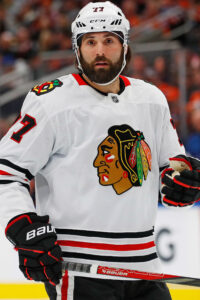11:03 AM: The Blackhawks officially confirmed Rinzel’s signing.
10:17 AM: It appears Oliver Moore won’t be the only prominent prospect that the Blackhawks will be signing. Daily Faceoff’s Frank Seravalli reports (Twitter link) that Chicago is also inking defenseman Sam Rinzel to a three-year, entry-level deal that begins this season. PuckPedia adds (Twitter link) that the contract will break down as follows:
2024-25: $830K salary, $95K signing bonus, $25K games-played bonus
2025-26: $855K salary, $95K signing bonus, $500K ‘A’ bonuses
2026-27: $855K salary, $95K signing bonus, $750K ‘A’ bonuses
The above works out to a cap hit of $942K and an AAV of 1.363MM. Rinzel isn’t eligible for ‘A’ bonuses in his contract this season since they’re unachievable with how little time is remaining in the schedule.
The 20-year-old was the 25th overall selection by Chicago back in 2022 out of Chaska in Minnesota’s high school system. At the time, he was viewed as a high-ceiling but a long-term development project.
Rinzel spent his post-draft season exclusively with USHL Waterloo after spending a bit of time there the year before as well. After a strong year offensively with them, he went on to the University of Minnesota where he has spent the last two seasons. In his freshman year, Rinzel put up two goals and 26 assists in 38 games while this season, he notched 10 goals and 22 helpers in 40 contests, ranking him sixth among all Division I blueliners in points.
It appears Chicago feels Rinzel is ready for the next test. Because the contract starts this season, he will not be eligible to play with AHL Rockford once Chicago’s season ends but there’s a good chance he’ll see some time with the IceHogs next season with GM Kyle Davidson shifting toward giving his top prospects a chance to play a prominent role in the minors before getting an extended NHL look. But for now, Rinzel will be able to get his feet wet at the NHL level and get into a few games with the Blackhawks down the stretch.

